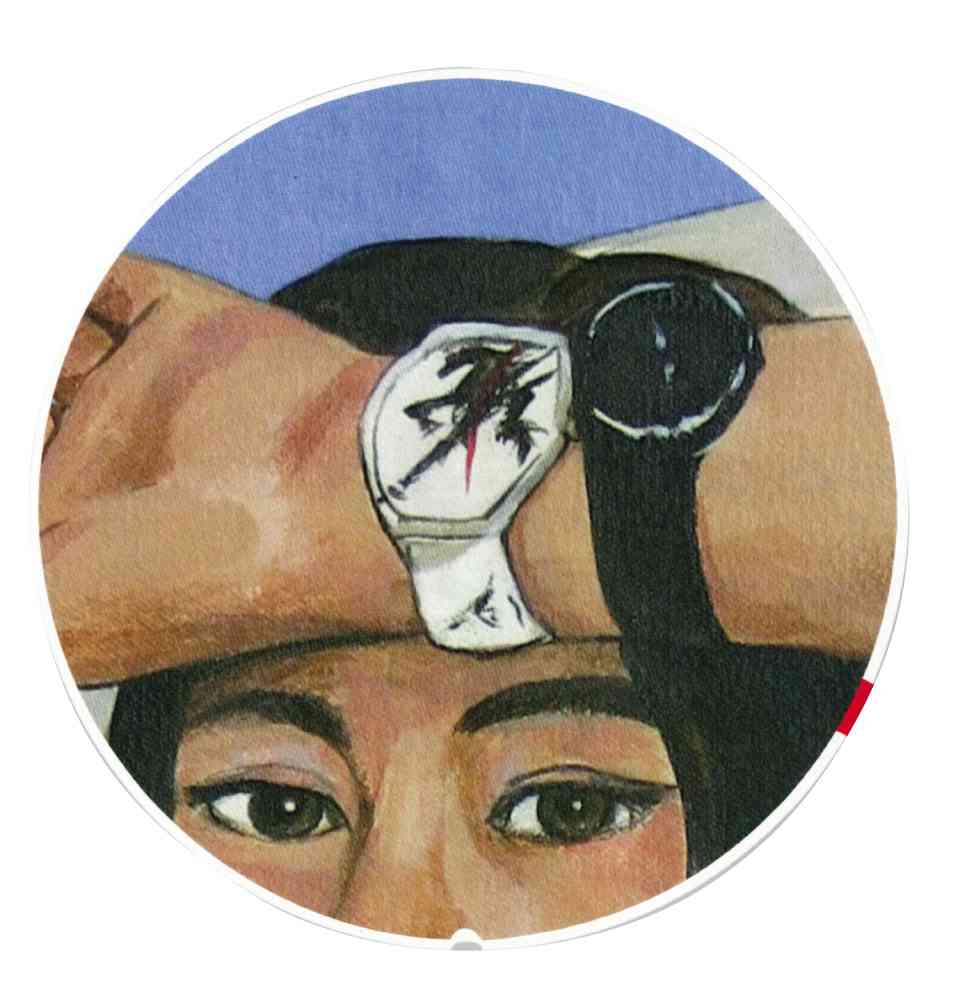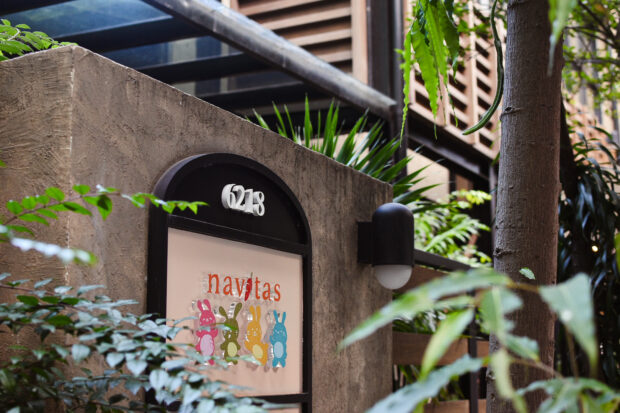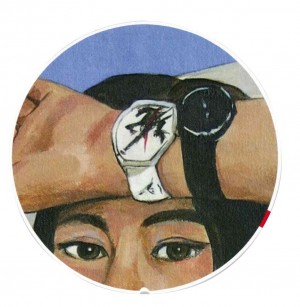
‘I’ve always wanted a woman,” said BenCab with an almost deadpan expression. I didn’t have to bait him into saying it. He obviously knew it was a sound bite I wanted to get as we sat down to dinner last week.
Wise to the ways of media, BenCab, the National Artist and the celebrity that he is now, knows very well that journalists, and perhaps the world at large, have always mined, for stories and titillating art world talk, his attraction to women—and vice versa.
For BenCab, as a Lifestyle colleague loves to put it, is one “classic hunk,” referring to his towering height, good build, and good looks, even now in his senior years.
At this dinner, however, I meant to focus not on his trivial attributes, but on the woman in BenCab’s art.
There have been women in BenCab’s life—and then there’s “Sabel,” his woman scavenger who has become a global icon for Philippine art, indeed contemporary culture.
Sabel is known not only on the Philippine art scene but also on the global artscape, owing to the exhibits BenCab has held abroad and the awards and accolades he has received for it.
The waitlist for a BenCab’s “Sabel” (along with his other paintings) runs to years, and collectors’ persistent lobbying for a BenCab with Annie Sarthou, his veritable manager and longtime companion, could yield interesting anecdotes.
Since the 1960s, when BenCab caught sight of this scavenger in his neighborhood in Bambang in the heart of Manila and would take shots of her with his Nikon or draw her on his sketchpad, Sabel has undergone innumerable interpretations, indeed reincarnations in art, in various media.
I can’t forget the time I visited the Tagaytay weekend home of Dr. Joven Cuanang, the art connoisseur and museum owner and until recently, medical director of St. Luke’s. What greeted us was a life-size concrete sculpture of a woman swathed in one graceful fold of fabric. We recognized it instantly as Sabel—Joel Alonday’s tribute to BenCab.
On Nov. 4, BenCab’s “Sabel” will have another reinvention, this time on the world stage as Swatch launches the limited-edition timepiece designed by BenCab to celebrate the 25th

his favorite Swatch, taken a few weeks ago
anniversary of Swatch in the Philippines.
A first
It is a “Sabel” Swatch. It should be interesting to see the watch BenCab has designed, after the woman who has become the symbol of his art and an image of contemporary Philippine culture and society.
Just as important is the fact that BenCab becomes the first Filipino artist to be selected by Swatch to design a limited-edition watch for the world market. He becomes only one of about 75 foremost artists in the world chosen by the leading Swiss watchmaker to design its limited-edition lines.
In this distinction, he joins the ranks of Yoko Ono, Annie Leibovitz, and the famous American artist Keith Haring, known for his graffiti-inspired art and whose Swatch edition is still coveted by collectors worldwide.
“That’s what I’m excited about,” says BenCab during last week’s dinner. It’s good to feel that this National Artist, who has garnered the highest accolade that the country bestows, can still feel excitement over yet another career milestone.
But then, if there’s one trait any observer could envy BenCab for—apart from the gift of art—it’s his ability to welcome, indeed embrace, whatever opportunity life throws his way. That’s how he has shaped his life into art, and not only the other way around.
Yet his excitement over the Swatch limited-edition perhaps hardly approximates that of Virgie Ramos, the woman who worked obsessively to build Swatch as a brand in the Philippines.

This pioneering retailer, who’s easily one of the Philippines’ lifestyle icons, spent days shuttling between England and Switzerland to present the BenCab design to Swatch’s top officials. She was ecstatic when they gave the nod last July; she knew the recognition belonged not only to BenCab or Swatch, but to Philippine art as well.
That set the ball rolling for the world launch on Nov. 4 at the Swatch + Swatch Center on Pasay Road, Makati City.
Swatch Center
The Center, finished just in time for the opening, is another first—it’s the only Swatch Center of that scale (two stories high) outside of Switzerland, and which the Swiss watch firm has allowed to carry its name.
Swatch creative director Carlo Giordanetti will attend the event.
The November launch and opening of Swatch + Swatch Center is a collaboration of creative minds. Ramos has asked BenCab to have a hand in it, with creative director Rowell Santiago and production designer Gino Gonzales, to transform the ground floor into an expression of BenCab’s art, from “Sabel” to BenCab sculpture—with an interesting touch, a Volkswagen Beetle from sculptor Ramon Orlina’s vintage car collection which BenCab has painted sometime ago. (Orlina is another multifaceted artist with an interesting passion—restoring old cars.) Orlina’s BenCab Volkswagen will be on display on the ground floor.
Giant panels of black-and-white “Sabel” will be the grabbing sight to greet the eye as the guests walk in. The lighting design of this installation should also be worth seeing—and the fact that this black-and-white “Sabel” is inspired by the Japanese geisha, Japan being the country Ramos so loves and which has been of interest to BenCab himself.
Can’t have enough
The Nov. 4 event will be a hot invite not only for Swatch collectors but also for BenCab collectors who have been eager—and waiting to own—a piece from him. To mark the occasion, he designed a “Sabel” paperweight and the black-and-white “Sabel” panel series will have a limited print edition.
People, especially his collectors, can’t seem to have enough of Sabel, we told BenCab.
“Yes, the demand is there, so you give in,” he said. “That can be good or bad.”
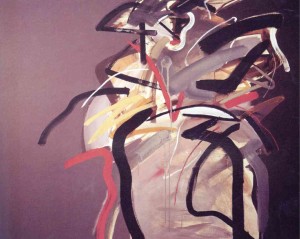
collection, reprinted from “Bencab”
Good, because the challenge to his art of such huge market demand doesn’t cease. Bad, because what began as his life-changing experience of and inflamed statement about Philippine society could be reduced into triteness, if not routine work.
“I don’t think of Sabel as Sabel anymore,” he said. “Sometimes she’s just lines or forms.”
In short, Sabel’s transmutation, from the real to the figurative and the abstract, continues. It remains a work in progress, an art that life defines, an art created with each opportunity.
Twists and turns
For the story of Benedicto Cabrera is about seizing the right opportunity. His life is every biography writer’s dream because it’s replete with dramatic twists and turns, in a global setting—from the accessoria of the poor neighborhoods of Manila to the lovely gardens of London, where he once lived, to the mountains of Baguio and Benguet where he now lives. And it helps that he keeps newspaper and magazine clippings about his career, and whatever documentaries and souvenirs from his personal milestones.
“If opportunity comes, I grab it,” he said. “And many of these things I didn’t plan. They just landed on my lap, like the land in Benguet.”
BenCab is referring to the mountain museum he’s built in Benguet, which is now the BenCab Museum and which has become a major destination in the Mountain Province. He is proud of the fact that it has been cited as one of the top 25 museums in Asia, the only one from the Philippines, by TripAdvisor.
He has a term for his perspective in life: “adaptive.” He adapts “to be able to survive… Matagal din ang struggle (ko). (It’s been a long struggle).”
The way he talks, it’s as if he’s still in survival mode. Perhaps this is because BenCab wasn’t born to a life of bounty.
Although his family wasn’t that poor, still, being the youngest in a brood of nine, he had had to earn his keep even at an early age.
Bading
He was born in Malabon (just like his good friend, the cartoonist Nonoy Marcelo). His father was a government employee. He came after six girls, which is why he loves to say that he’s used to a life with women.
The man who helped shape his life was his brother, Salvador (nicknamed Bading), the artist.
Bading was 14 years older, and it was he who steered BenCab’s early talent for drawing and illustration to what would eventually be a career in painting. His was a seminal influence on BenCab’s early art; we say early because from the ’60s onward, BenCab explored his art in ways and levels only his free spirit and questioning mind could (his social commentary of the turbulent ’70s, for instance).
Before his teens, his family moved to Bambang, the low middle-class interior of Manila, whose neighborhood gave him the variety and flavor of life that would serve as the content of his early art. The illustrations of the komiks—the dominant medium of the ’50s and the ’60s—were his early inspiration.
In the coffee-table book “Bencab,” published by his good friends and foremost BenCab collectors, Ambassador Manolo Lopez and his wife Maritess, writers Krip Yuson and Cid Reyes narrated the man’s life and art.
Yuson recounted how, as a young boy, BenCab would draw on the pitogo (the oblong palm nut whose content had been hallowed out) which boys in the neighborhood would collect; how, as a 12-year-old, in Grade 6 at Balagtas Elementary School, he won an award for a poster he made about human rights. This was in 1954, and for that he won P100—one of his early realizations that he could eke out a living by drawing and illustrating.
After high school at Arellano, just so BenCab could enroll at the University of the Philippines (UP), his father had to borrow money. It was at UP Fine Arts, Yuson wrote, that BenCab discovered his art beyond drawing.
Joya
BenCab was grateful to his professors for this, notably Dean Jose Joya, who, in death, would become National Artist himself.
Joya was one of those who exposed BenCab to the bigger circle of the arts, like designing for theater. More important, Joya would help BenCab see beyond the literal expression of art, into the more abstract.
BenCab couldn’t enjoy full scholarship at UP because his grades in the humanities and English were low compared to the arts subjects. The incentive to work was greater than the need to finish Fine Arts.
Bading had tipped him off to an illustration/layout job in the US Embassy, in the United States Information Service, which would pay P250 a month. The 21-year-old would now enjoy how it felt to have a job.
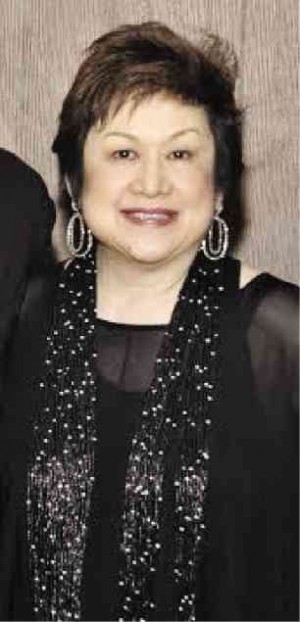
Soon Bading learned that his friend in the Manila Times, Noli Galang, would be moving to Hong Kong, along with other journalists. BenCab applied and got the layouting slot in Manila Times.
It is interesting to note that, decades later, it would be Galang who would be art director of BenCab’s coffee-table book, and the two friends would shuttle to Hong Kong to oversee its printing.
As its editor, I felt privileged to have collaborated with the two. The book would be Galang’s last work. (Galang died about two years after its publication.)
BenCab’s stint in the Manila Times brought him to the epicenter of Manila’s art and literary scene and bohemian life. At night, after work, he would be a portraitist in Manila’s café scene.
To Yuson, BenCab recalled how Nick Joaquin and Ishmael Bernal would give him free beer whenever he sketched them (although BenCab didn’t drink).
Door to door
It was also around this time that Bading led BenCab to the Mabini circle of artists. They would sell their paintings in the heart of Manila. And, BenCab recalled over our dinner, if they weren’t sold, “we would lug them from door to door,” to the nearby houses of rich Filipino-Chinese traders.
It was in Ermita where, Paul McCartney, during the (in)famous visit of the Beatles here in 1966, spotted a painting of BenCab in the gallery of Bading. It was said that the Beatles, instead of paying a courtesy call to President Marcos in Malacañang, chose to spend the day driving around Mabini, in the Ermita area.
The story goes that McCartney, not having P70 on him, borrowed money from his driver to pay for BenCab’s painting. The acrylic on canvas is titled “Fishing in Sexmoan.”
Obviously, McCartney has kept his BenCab painting. During the editorial work on the “Bencab” coffee-table book, McCartney lent an image of the painting to be reproduced in the book.
It was in 1968, in an exhibit at Luz Gallery of his works on Bambang and Tondo streetlife, that the art world was introduced to Sabel, as Yuson wrote—“the deranged woman who frequented their street…”
Yuson quoted Reyes’ interview with BenCab about Sabel: “Sabel is, or was—I was told she died in 1972—a real, flesh-and-blood person. I used to see her in the streets of Bambang, scavenging around garbage cans… I thought she made a terrific subject visually… She used to gather these plastic sheets and wrap them around her body. They made the most beautiful abstract shapes.”
BenCab’s watch design from Sabel must be one of the most-awaited lifestyle events this year.
Asked why she chose BenCab for the 25th anniversary limited-edition Swatch, Ramos said: “First, because there hasn’t been a day I saw him not wearing a Swatch. Second, he helps the community and the young artists. Third,” she added, laughing, “he has the looks. Total package.”
The second reason sets him apart from the pack. BenCab is one artist who connects to the community and who always feels the urge to give back to society.
It’s well-known how he founded the Tam-awan group of artists of Baguio.
What many don’t know is how he helps the children of his barangay in Benguet. His estate, with its rainforest, waterfall and spring water, is a stopover for children on their way to and from school—a trek up and down the mountain that can take an hour. They help themselves to the spring water.
He has built classrooms for them.
He also holds woodcarving competitions among the men—they have 10 hours to do the carving.
What’s amazing about BenCab is that he doesn’t tire of anything. He passes up nothing in life.
That’s an art.

